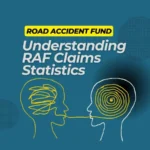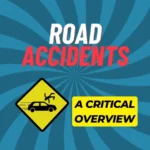Embark on a journey through the intricate world of the Road Accident Fund Act. This essential guide unlocks the complexities behind one of South Africa’s key legal frameworks, shedding light on its crucial role in road safety. Discover the unseen impact of the RAF Act on lives across the nation.
Introduction
In the bustling streets and highways of South Africa, the Road Accident Fund Act 56 of 1996 stands as a beacon of hope and reassurance for those affected by the unforeseen calamity of road accidents. Established with a purpose both noble and essential, this Act is not just a legal document; it’s a lifeline for countless individuals who find themselves victims of road mishaps.
Imagine, for a moment, you or a loved one involved in a road accident. Amidst the whirlwind of confusion and distress, the Road Accident Fund Act emerges as a crucial ally, offering financial support and a semblance of stability in turbulent times. It’s a testament to the nation’s commitment to safeguarding its citizens against the unpredictable nature of life on the road.

So, why is this Act so important for road accident victims and claimants? The answer lies in its core mission: to provide much-needed compensation for medical expenses, loss of income, or in the worst-case scenario, loss of support due to a road accident. This compensation is not just monetary relief; it’s a crucial support system helping victims and their families navigate the aftermath of an accident, aiding in recovery, and offering a chance to rebuild their lives.
In this article, we delve deep into the Road Accident Fund Act, exploring its intricacies and implications, and uncovering how it touches the lives of ordinary South Africans – not as a distant legal framework, but as a tangible, supportive presence in times of need. Join us as we journey through the Act’s provisions, its evolution over the years, and the profound impact it has on those it seeks to protect.
Key Features of the RAF Act
At the heart of the Road Accident Fund (RAF) Act lies a commitment to compassion and support. It’s a framework designed with the understanding that road accidents can be life-altering, and the RAF’s role is to alleviate some of the burdens faced by victims.
Firstly, let’s consider the RAF’s role and responsibilities. Acting almost as a guardian, the RAF provides essential financial assistance to accident victims. This includes coverage for medical expenses, which can be a heavy burden in the wake of an accident. Beyond this, the RAF also steps in to cover loss of income, ensuring that victims and their families do not suffer financially while recovering.
But who is eligible for these compensations? The RAF casts a wide net in its support, extending its assistance to drivers, passengers, and even pedestrians involved in road accidents. Eligibility is not just about being involved in an accident; it’s about the impact that the accident has had on your life. Whether it’s a temporary injury that keeps you from work, or a more severe, long-term impairment, the RAF is there to help bridge the gap.
Understanding the RAF’s role and the types of compensation available can be a lifeline for those affected by road accidents. It’s a reminder that amidst the chaos and uncertainty of life, there are structures in place to offer support and hope.

The RAF Act: A Brief History
Tracing its origins back to 1996, the Road Accident Fund Act was born out of a need to create a unified system for road accident compensation in South Africa. Its initial objective was clear: to establish a fund that would be the sole source of compensation for victims of road accidents. This was a significant step towards ensuring that those affected by road tragedies were not left to navigate the aftermath alone.
As the years unfolded, the RAF Act underwent several amendments, each shaping and refining the system to better meet the needs of accident victims. These changes were not just adjustments to legal text; they represented an evolving understanding of the challenges faced by road accident victims. From expanding the types of compensation available to revising the claims process, each amendment was a stride towards more comprehensive and accessible support.
The history of the RAF Act is not just a timeline of legal changes; it’s a narrative of a nation’s ongoing commitment to protecting its people on the roads. It’s a story of adapting to the changing needs of society and striving to offer a hand of support in times of crisis.

Amendments and Their Implications
The Road Accident Fund Act, since its inception, has been through a series of amendments, each reflecting a deeper understanding of the needs of road accident victims.
In 2001, the Act was amended to expand the RAF’s capacity to contribute to road safety projects, a move that signified a shift towards a more proactive approach to road safety. Then in 2002, the amendment focused on streamlining the management of the Fund, reducing the minimum number of Board members, and making the representation of the national Department of Transport more flexible.
The amendments of 2005 brought even more significant changes. They allowed for greater flexibility in the Fund’s financial management and introduced important changes in compensation claims, particularly in terms of the amounts and types of damages that could be claimed.
Each of these amendments has had a profound impact on claimants. By evolving the Fund’s structure and processes, the RAF has become more efficient and responsive to the needs of those it serves. These changes reflect a commitment to continually improve the support provided to road accident victims in South Africa.
The Road Accident Fund Act 56 of 1996 intends:
(1) to provide for the establishment of the Road Accident Fund (RAF); and
(2) to provide for matters connected therewith.
Amendments to the RAF Act have been as follows:
(i) Amended by Revenue Laws Amendment Act 31 of 2005
(ii) Amended by Road Accident Fund Amendment Act 19 of 2005
(iii) Amended by Road Accident Fund Amendment Act 43 of 2002
The Road Accident Benefit Scheme Bill (B17-2017)
The Road Accident Benefit Scheme Bill, introduced in 2017, proposed a significant overhaul of the existing Road Accident Fund framework. Its intention was to shift from a compensation model to a more standardized “social benefits” system. However, this Bill faced strong opposition and was ultimately rejected.
Criticism focused on its potential to limit reasonable compensation for accident victims, including the denial of lump-sum payments and equal compensation for both negligent motorists and innocent victims. This aspect was particularly contentious, as it seemed to undermine the principles of fairness and accountability.
The public and legal community’s response was overwhelmingly negative. Concerns were raised about how these changes would impact the most vulnerable members of society, particularly in terms of reduced benefits and limited access to compensation. The rejection of this Bill reflects a public consensus on the need for a more equitable and supportive system for road accident victims in South Africa.

The RAF Amendment Bill of 2023
The RAF Amendment Bill of 2023 stands at the forefront of significant changes in South Africa’s approach to road accident compensation. This Bill, if passed, would fundamentally transform the RAF from a compensation-based system to one offering structured, annuity-like social benefits.
Key proposals include limiting eligibility to accidents occurring on public roads, excluding general damages, and changing the structure of compensation from lump-sum payments to periodic payouts.
These proposed changes have stirred a considerable public response, with many expressing concerns about the potential reduction in benefits and the impact on vulnerable road users. Critics argue that this shift might not only limit the support available to accident victims but could also place additional strain on the public healthcare system and other social safety nets. The Bill, thus, stands at a crossroads of debate, reflecting the nation’s ongoing struggle to balance financial sustainability with the needs of its road accident victims.
Navigating RAF Claims: A Step-by-Step Guide
Filing a claim with the Road Accident Fund can be a daunting process, but understanding the steps can make it more manageable.
Firstly, gather all necessary documentation, including a police report, medical records, and proof of income if the claim involves loss of earnings. It’s crucial to ensure these documents are accurate and comprehensive.
Next, complete the RAF claim form. This form requires detailed information about the accident and the injuries sustained. Be as precise as possible; the accuracy of this information is vital.
Once your claim form and supporting documents are ready, submit them to the RAF. This can be done via post, at a RAF office, or through a legal representative.
Keep in mind the time limits for submitting a claim. Generally, claims must be submitted within three years of the accident date, or within two years if the identity of the person who caused the accident is unknown.
Throughout this process, keep copies of all documents and submissions for your records. It’s also advisable to seek legal advice to navigate the complexities of the RAF system and ensure your rights are fully protected.
Remember, patience and attention to detail are key in successfully navigating RAF claims.
Case Studies and Legal Precedents
The Road Accident Fund Act’s application has been significantly shaped by several notable legal cases. These cases often revolve around disputes regarding the extent of the RAF’s liability, the calculation of compensation, and the interpretation of various clauses within the Act.
One landmark case, for instance, challenged the RAF’s method of calculating loss of income, leading to a refined approach that more accurately reflects the claimant’s actual financial loss. Another notable case involved a dispute over the definition of ‘serious injury’, which prompted a review of how injuries are assessed under the Act.
These legal precedents not only highlight the complexities of the RAF Act but also underscore the dynamic nature of its interpretation and application. They serve as important guides for future claimants and legal professionals, shaping the understanding of the Act’s provisions and its practical implementation in real-world scenarios.

Challenges and Controversies
The Road Accident Fund has faced various challenges and controversies. Key issues include financial sustainability, with the RAF experiencing funding deficits, leading to delayed claim payouts. This financial strain impacts the RAF’s ability to provide timely and adequate compensation to accident victims.
Legal experts and the public have also criticized the RAF for its complex and lengthy claim process, which can be daunting and inaccessible to many claimants, especially those without legal representation. Moreover, there have been concerns about the fairness and adequacy of compensation provided under the RAF, particularly following the proposed amendments and changes in policy.
These challenges underscore the need for ongoing reform and improvement in the RAF system to ensure it continues to serve its intended purpose effectively and equitably.
Looking Ahead
As we look towards the future of the Road Accident Fund, potential changes loom on the horizon. The RAF’s financial sustainability remains a critical concern, with ongoing discussions about reforming its funding model to ensure its viability. Claimants should stay informed about these developments, as they could impact the nature and extent of available compensation.
There is also a growing push for streamlining the claims process to make it more efficient and user-friendly. This could mean changes in how claims are filed and processed, potentially easing the burden on claimants.
In this evolving landscape, claimants should remain vigilant and proactive, seeking updated information and legal advice where necessary. Staying informed and adaptable will be key in navigating the future of the RAF.
Conclusion
In this journey through the Road Accident Fund Act and its landscape, we’ve uncovered key insights about its purpose, history, and the challenges it faces. The RAF stands as a crucial support system for road accident victims, evolving over time to meet changing needs and challenges.
As we look forward, it’s essential for claimants and all South Africans to stay informed and engaged with the RAF. Whether it’s understanding the claims process, keeping abreast of potential legislative changes, or simply being aware of your rights as a road user, informed engagement is key.
Remember, the RAF is more than just a fund; it’s a lifeline for those affected by road accidents. Its future, shaped by both challenges and reforms, will continue to impact the lives of many. As stakeholders in this system, our collective awareness and participation will help shape a more efficient and equitable RAF for all.
Your understanding of the Road Accident Fund Act is just beginning. Stay ahead in the dynamic RAF ecosystem by subscribing to our newsletter. Unearth more insights, updates, and expert analyses tailored to help you navigate this crucial landscape. Read more and become an informed member of the RAF community today
Frequently Asked Questions
How Have Amendments to the RAF Act in 2001, 2002, and 2005 Impacted Claimants?
These amendments expanded the RAF’s capabilities, including how claims are calculated and processed, ultimately aiming to provide more comprehensive support to accident victims.
What Criticisms Were Raised Against the Road Accident Benefit Scheme Bill of 2017?
Critics argued it limited compensation for victims, abolished lump-sum payments, and treated negligent drivers and innocent victims equally, impacting fairness.
How Does the RAF Amendment Bill of 2023 Propose to Change Compensation?
It suggests moving from lump-sum compensation to structured, annuity-like payments and limits the eligibility for claims.
What Are the Current Financial Challenges Facing the RAF?
The RAF faces funding deficits impacting its ability to provide timely and adequate compensation.
What Legal Precedents Have Influenced the RAF Act's Application?
Key legal cases have shaped the RAF’s methods of calculating loss of income and assessing serious injuries.
How Can Claimants Navigate the RAF Claim Process?
Gather necessary documents, complete the claim form accurately, submit within the time limits, and consider seeking legal advice for complex cases.
What Should Claimants Know About Future Changes to the RAF?
Stay informed about potential legislative changes and reforms that could impact the nature and extent of available compensation.
Why Is There a Push for Streamlining the RAF's Claims Process?
To make it more efficient and accessible, addressing concerns about its complexity and the length of time to process claims.
What Impact Do The RAF's Financial Strains Have on Claimants?
Financial difficulties can lead to delayed payouts, affecting the RAF’s ability to provide prompt financial support to accident victims.
How Do The RAF's Changes Affect Vulnerable Road Users?
Proposed changes might limit the support available, placing additional strain on public healthcare and other social safety nets.
Glossary
- Amendments: Changes or modifications made to a legal document or law.
- Claimant: An individual who makes a claim or seeks compensation.
- Compensation: Payment awarded to someone as a recompense for loss, injury, or suffering.
- Eligibility: Qualifying criteria that determine who can apply or receive benefits.
- Lump-Sum Payment: A large, single payment made at one time, rather than a series of smaller payments.
- Negligent Motorist: A driver who fails to exercise a reasonable standard of care, resulting in an accident.
- Payouts: Disbursements or payments made by the RAF to claimants.
- Precedent: A legal decision or case that serves as an example or rule for future cases.
- Public Roads: Roadways that are maintained by the government and open to public use.
- Structured Benefits: Compensation distributed in a systematic way, often periodically, rather than as a single payment.
- Sustainability: The ability to be maintained or upheld, particularly in financial terms.
- Tariff: A set price or charge applied to certain services or payments.
- Vulnerable Road Users: Individuals who are at greater risk in traffic, such as pedestrians or cyclists.
- Annuity: A financial product that pays out a fixed stream of payments to an individual, typically used as an income stream for retirees.
- Legislative Changes: Alterations or modifications made to existing laws by a governing body.







